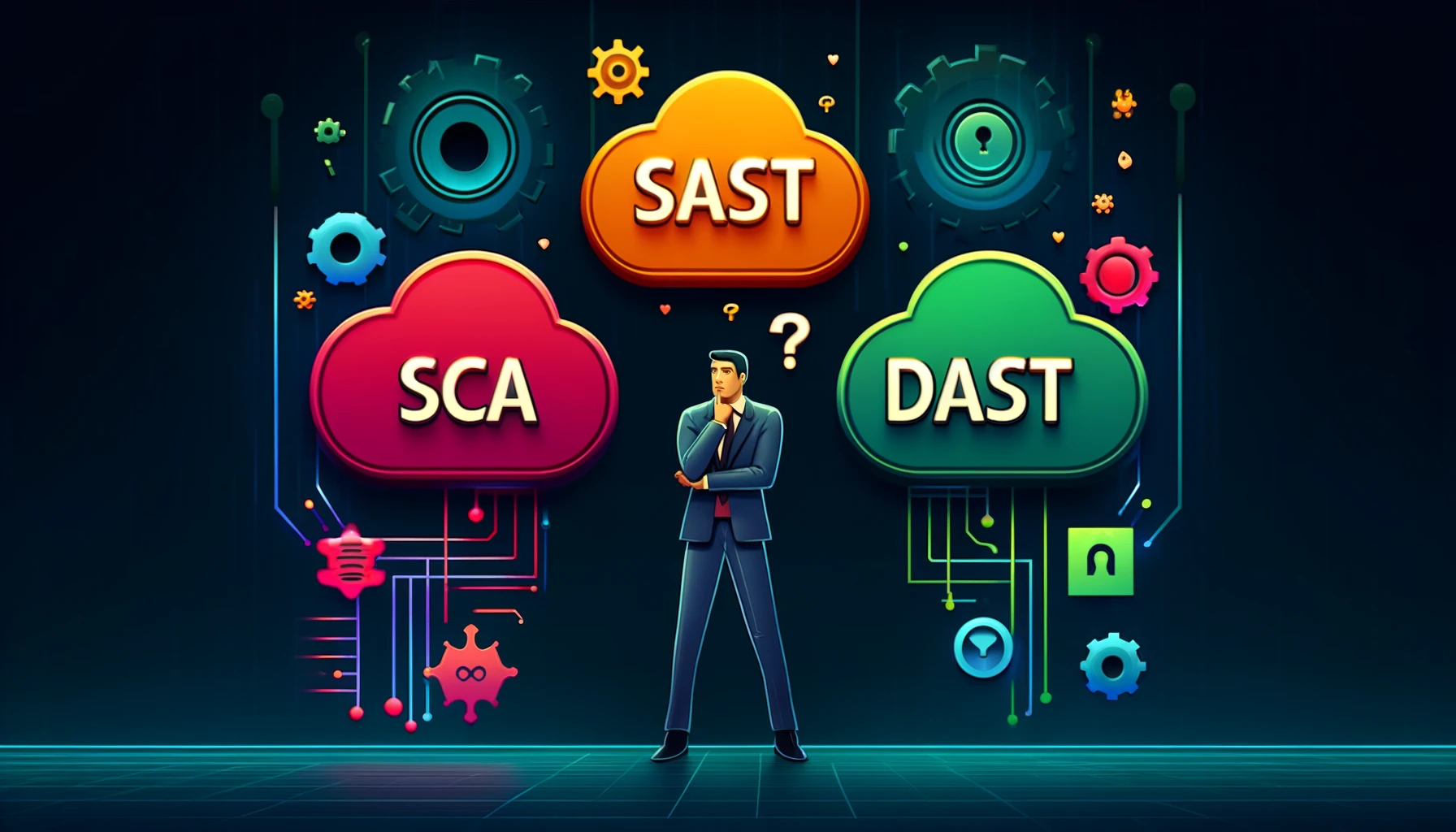Security Testing Tools in DevSecOps (SAST, DAST & SCA)
 Samikshya Sapkota
Samikshya Sapkota
In the dynamic landscape of software development, security is more important than ever. As our lives become more connected through technology, the risks from software vulnerabilities grow. With cyber threats on the rise, it's important to know the different ways we can protect our software. We'll cover three key methods: Static Code Analysis (SAST), Dynamic Application Security Testing (DAST) & Software Composition Analysis (SCA). Different types of testing help create these defenses, ensuring that we can find and fix problems before they can be exploited by attackers.
Static Code Analysis (SAST):-
SAST tools analyzes the application’s source code of an application or program without executing it.The analysis is performed during the development phase, allowing developers to identify vulnerabilities like SQL injection, cross-site scripting (XSS), and other code-level issues early in the development process. Tools we are using in SAST are SonarQube, Checkmarx, Veracode.
How SAST Works ?
The workflow begins with planning and setup, where security policies are defined. During the development phase, developers write code and conduct peer reviews to catch potential issues. Upon committing code to a version control system like (git, git-lab), the CI/CD pipeline is triggered, initiating an automated SAST scan. The SAST tool analyzes the code for security vulnerabilities, generating a detailed report highlighting issues such as SQL injection and cross-site scripting (XSS). Security analysts and developers look at the report, decide which issues are the most serious, and then assign tasks to fix them. Developers then fix the vulnerabilities, and the code is rescanned to verify that the issues have been resolved. Once the code passes the SAST scan without critical vulnerabilities, it proceeds through the CI/CD pipeline, including deployment to staging for further testing and finally to production. Continuous monitoring and regular updates to security rules help keep things safe and adjust to new threats. This systematic approach helps maintain the security and integrity of the application throughout its lifecycle.
Dynamic Application Security Testing (DAST):-
Dynamic Application Security Testing (DAST) is a security testing methodology designed to identify vulnerabilities and weaknesses in a running web application or software system. DAST analyzes the application while it is running, looking for vulnerabilities that could be exploited during normal operation. Unlike static analysis methods that examine the source code, DAST tests the application from the outside by simulating various attacks, similar to how a real attacker would interact with the application. Tools we are using in DAST are OWASP ZAP, Acunetix, Netsparker etc.
How DAST Works ?
The workflow of Dynamic Application Security Testing (DAST) involves several steps to ensure comprehensive security assessment of a running web application. First, the application is deployed in a test environment that mimics the production setup. For example, let's consider a web application named "ShopEasy" that allows users to browse products, add items to a cart, and make purchases. A DAST tool, such as OWASP ZAP, is configured to target the "ShopEasy" application. The tool begins by crawling through all accessible parts of the application, mapping out its structure and identifying input fields, links, and forms. It then performs automated scans, attempting to exploit vulnerabilities like SQL injection in the search bar or cross-site scripting (XSS) in the user comment section.
During the scanning process, the tool sends various payloads to these inputs to see how the application responds, much like a hacker would. For instance, it might insert SQL commands into the search bar to check if the database is vulnerable to injection attacks. The DAST tool monitors the application's responses for any signs of vulnerabilities. Once the scanning is complete, it generates a detailed report listing identified security issues, such as an SQL injection vulnerability in the product search feature or an XSS vulnerability in the user comments section.
Security analysts and developers review this report, prioritizing the vulnerabilities based on their severity and potential impact. They then work on fixing these issues, such as by sanitizing inputs or updating security policies. After implementing the fixes, they rerun the DAST tool to verify that the vulnerabilities have been resolved. By incorporating DAST into the continuous integration and deployment (CI/CD) pipeline, "ShopEasy" can regularly test for and address new security threats, ensuring ongoing protection for the application and its users.
Software Composition Analysis (SCA) :-
Most modern applications rely on third-party components and dependencies to function. While this open-source code has its benefits, it can also introduce vulnerabilities, malicious code, and other security risks into an application. SCA is a security testing methodology that focuses on identifying and managing open-source and third-party components in software applications. It involves analyzing and monitoring the dependencies within the application’s codebase to identify vulnerabilities in the libraries and frameworks used. Tools we are using in SCA Synk, WhiteSource, FOSSA etc.
How SCA Works ?
Software Composition Analysis (SCA) works by scanning and analyzing the dependencies in a software project to identify security vulnerabilities and licensing issues. For example, in the development of an e-commerce platform called "ShopEasy," an SCA tool like Snyk is integrated into the CI/CD pipeline. This tool scans the codebase for open-source and third-party components, checking them against a vulnerability database. It identifies a critical vulnerability in an authentication library and alerts the development team, providing remediation steps. The team updates the library to a secure version and confirms the fix with another scan. By continuously using SCA, "ShopEasy" ensures their application remains secure and compliant, mitigating risks and maintaining reliability.
Subscribe to my newsletter
Read articles from Samikshya Sapkota directly inside your inbox. Subscribe to the newsletter, and don't miss out.
Written by

Samikshya Sapkota
Samikshya Sapkota
Learner